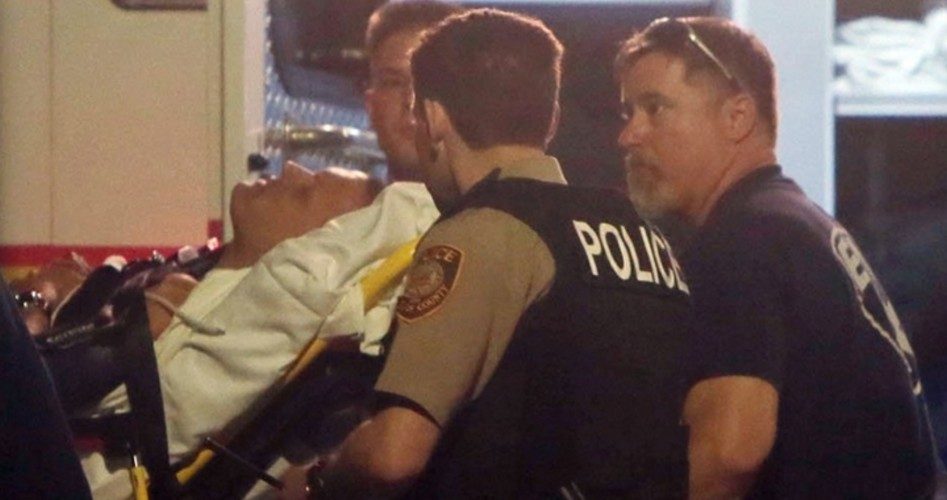
Two police officers were shot outside police headquarters in Ferguson, Missouri, early Thursday morning and were reported to be in serious condition. The shootings occurred during a protest over alleged racial bias in the St. Louis suburb that saw demonstrations and riots last year over the fatal shooting of an unarmed black teenager by a white police officer. The names of Thursday’s shooting victims were still not released in the early morning hours, but they were described as a 32-year-old officer from Webster Groves, who was shot in the face, and a 41-year-old officer from St. Louis County, who was shot in the shoulder. Both officers were taken to Barnes-Jewish Hospital in St. Louis. St. Louis County Police Chief John Belmar described the wounds as serious, the Associated Press reported.
Witnesses said the shots came from a hill behind dozens of protesters.
The violence grew out of a Wednesday night demonstration in which several dozen protesters gathered in front of the Ferguson police department, opposite two dozen officers in riot gear. The police contingent included officers from the St. Louis County Police Department, as well as officers from adjacent communities.
The demonstrations took place just hours after Police Chief Thomas Jackson announced his resignation, following the release last week of a scathing U.S. Justice Department report of racial bias and discrimination by Ferguson police. The city manager and the municipal judge also resigned. Some of the protesters Wednesday night were calling for the resignation of Mayor James Knowles III as well, the New York Times reported.
Racial tensions have run high in Ferguson since the shooting last August of 18-year-old Michael Brown, after he struggled with Officer Darren Wilson while Wilson was still in his police cruiser. Brown fled and Wilson was pursuing him when Brown turned toward the officer. Witness accounts differed over whether Brown has his hands up to surrender or whether the 6’4” 290-pound teenager was charging at the officer. Wilson claimed he feared for his safety when he fired six bullets into Brown. The incident sparked protests in Ferguson and other parts of the country, both after the event and again in November when a grand jury declined to indict Wilson. When demonstrations in Ferguson turned violent, with incidents of vandalism and looting, the city ordered a curfew and police turned out in military-style with assault rifles and armored Mine-Resistant Ambush Protected vehicles, giving rise to criticisms of a militarized police.
“I’ve said all along that we cannot sustain this forever without problems,” Chief Belmar told reporters during a news conference in front of Barnes-Jewish Hospital in St. Louis, where the wounded officers were being treated. Belmar said that, based on the trajectory and where the officers were standing he believed “these shots were directed exactly at my police officers.” The identity of the shooter and the type of gun used were still unknown, he said.
Wilson resigned from the Ferguson department in November. Despite a grand jury finding that there was not enough evidence to prosecute him, the shooting death of Michael Brown continues as a controversy in Ferguson, where many members of the largely African-American community insist Brown was attempting to surrender when Wilson shot him. The debate has extended well beyond the boundaries of Ferguson and St. Louis County, with critics claiming the prosecution presentation of the case to the grand jury was biased in favor of Wilson, and others arguing that while Brown was unarmed, Wilson was, nonetheless, acting in self-defense against a large and threatening assailant.
Physical evidence at the scene, including blood splatter residue, seemed to corroborate the officer’s version of events. Even the U.S. Justice Deparment, which practically vilified the Ferguson Police Department in a report about the alleged racial bias by the department, agreed in a separate 86-page report that the evidence — which covered “physical, ballistic, forensic, and crime scene evidence; medical reports and autopsy reports, including an independent autopsy performed by the U.S. Department of Defense Armed Forces Medical Examiner Service (“AFMES”); Wilson’s personnel records; audio and video recordings; and internet postings” — showed that Wilson was justified in shooting Brown.
Photo of one of the officers who was shot: AP Images



